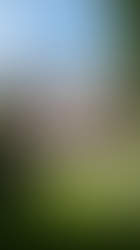Colour Schemes: How different colours affect us, from West London interior designer
- Nick Jeffries
- Aug 11, 2020
- 3 min read
Interior colours can communicate a powerful message, especially in places where the atmosphere is important. It’s remarkable how colour can affect our mood so intensely, which is why it’s so important to take it into account when thinking about painting your home.
How different colours affect us
Blue tones
Various shades of blue are known to relax the mind and relieve tension. Blue subconsciously reminds us of a clear, tranquil sky or the therapy of the sea.
In some cases, shades of blue can suppress your appetite. A funny fact is that if you eat from a blue plate you will actually eat less!
Typically relieving stress and anxiety, the colour blue can also seems as a cooler tone to some, so be sure to warm the colour down using darker shades as well.
Yellow tones
Green hues such as seafoam promote energy and liveliness.
Soft and warm greens can promote balance and harmony.
A yellowish mossy shade is a good colour to pair with soft greens because it reflects optimism, much like sunshine on a beautiful day. Greens and yellows would be a great interior design idea if you wanted to paint the interior of a gym. These colours will fill the room with energy, strength, and motivation.
Purple tone
Light purple and lavender shades give off a spiritual vibe and enhance the feeling of wisdom. Surrounding yourself with deeper shades of purple will promote creativity in yourself as well.
Choosing a deep purple for an accent wall will dictate the feeling of royalty and appreciation for your clients who come and go at your day spa or salon
Pastel tone
Pastel shades evoke trendiness and femininity for most people. They also promote a feeling of acceptance and soothe worry.
Pastels soften your mood and allow you to take in new thoughts and think optimistically.
Below we have listed a few interior design ideas from Farrow & Balls directory to help you create an environment often associated with the atmosphere.
Light Walls and Darker Woodwork
A marvellous way to create light and space is to use the lightest colour on the largest surface area, such as the walls, and a darker tone on woodwork.
This works well if you are using a neutral scheme and gives a more ‘decorated’ feel.
The use of a dark colour on skirting boards, not only makes the walls appear lighter in contrast, but it also creates a strong contemporary aesthetic, making everything above feel elongated and lighter in contrast.
One Colour Used on Walls And Woodwork
There is great historic precedent for using one colour on both walls and woodwork and it is also popular in contemporary settings as it creates a strong, clean look.
It generates a sense of calm in a room, as well as exaggerating its size, as there are no contrasts to draw the eye.
How To Create The Illusion Of More Space
Costly extensions and architects aside, colour can be used to alter the shape of a room. When planning your colour scheme remember that a darker wall colour will bring it towards you, whereas a lighter colour creates the illusion it’s further away.
You can also prevent narrow hallways from appearing ‘tunnel-like’ by painting the end wall a darker shade than the side walls. The same principle works within a rectangular room that you’d like to make appear squarer.
Making The Best Of A Room With Little Natural Light
Most of us have a small room that does not exactly benefit from natural light, and we all share an urge to paint it eye-watering white to force it to feel brighter.
But rather than unwittingly creating a doctor’s waiting room in your downstairs bathroom; instead use warm, darker colours or even bold patterned wallpapers to create a dramatic, yet intimate atmosphere.











































































































































Comments